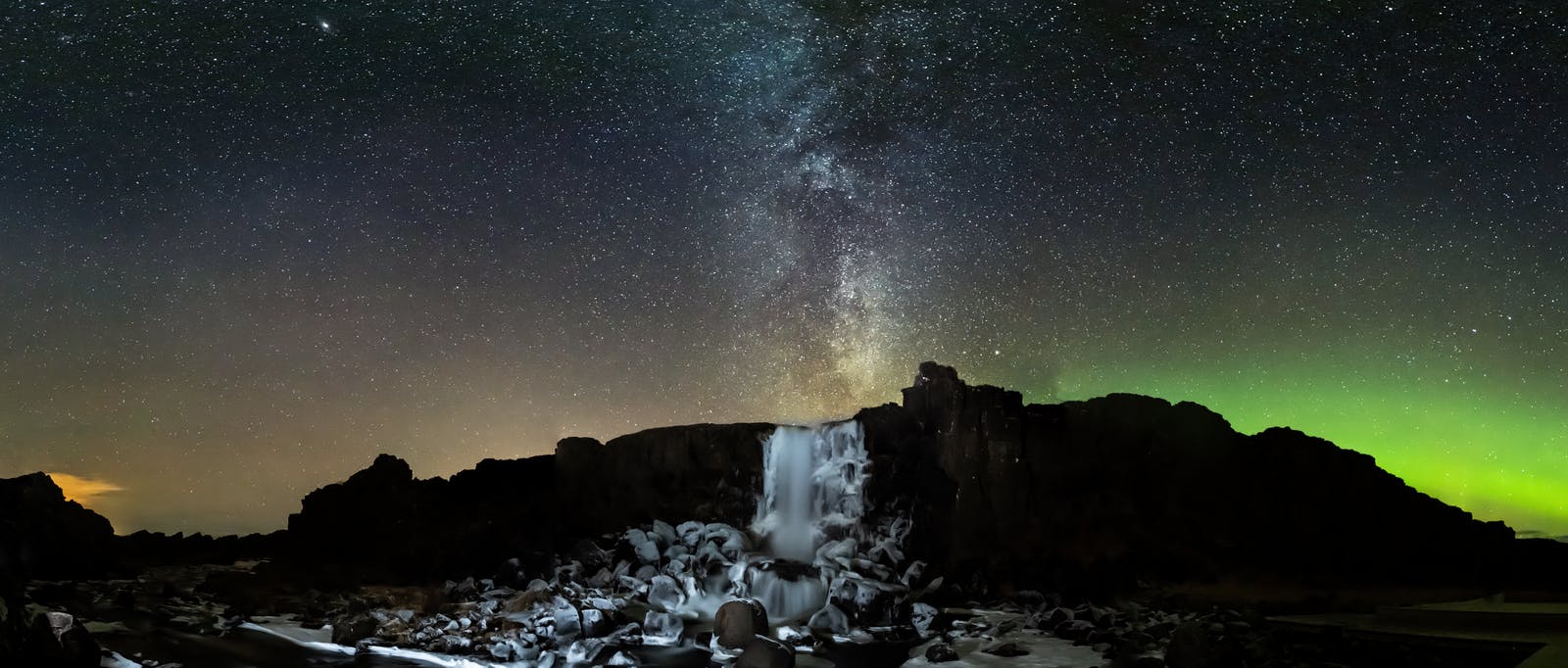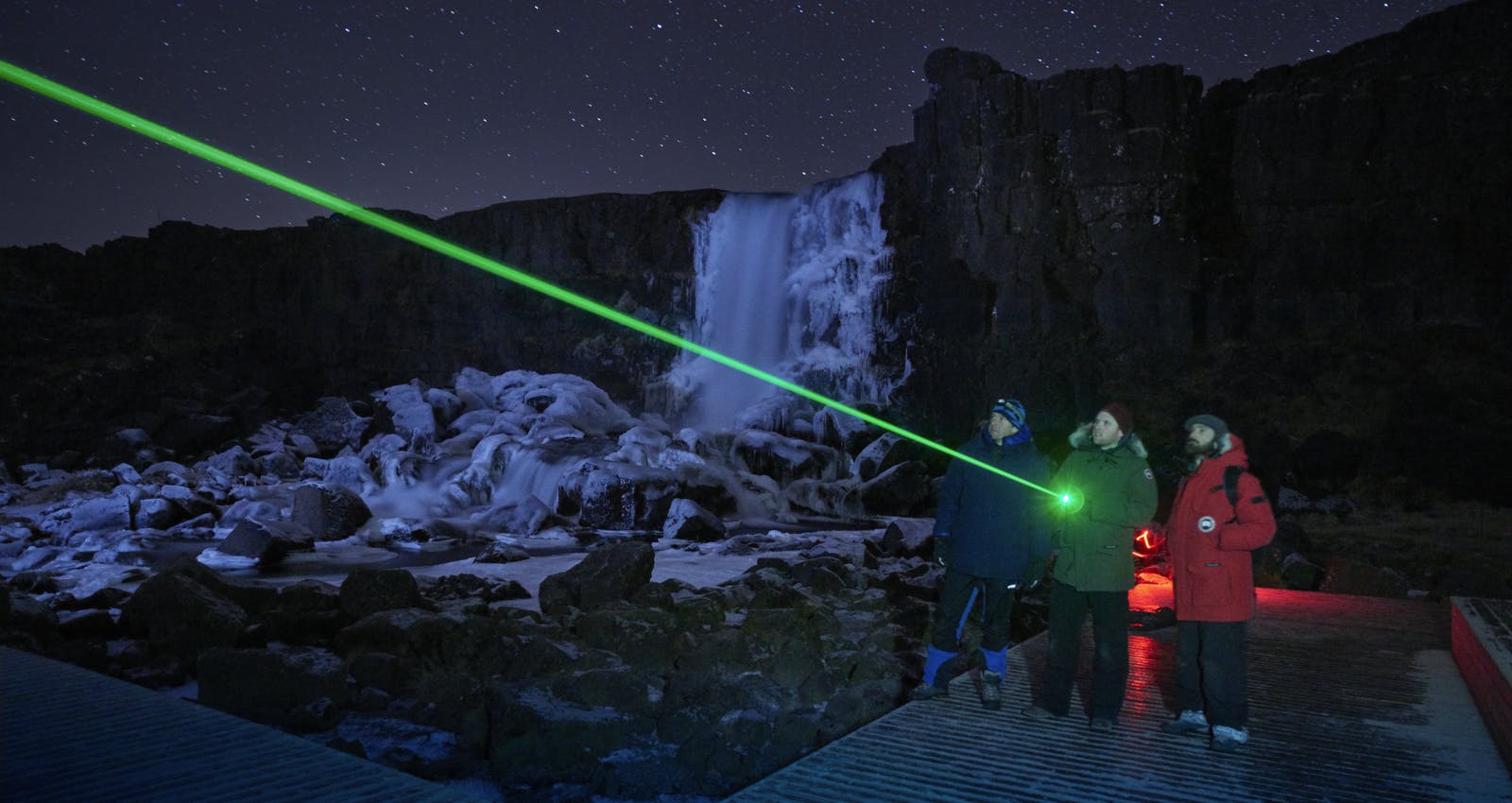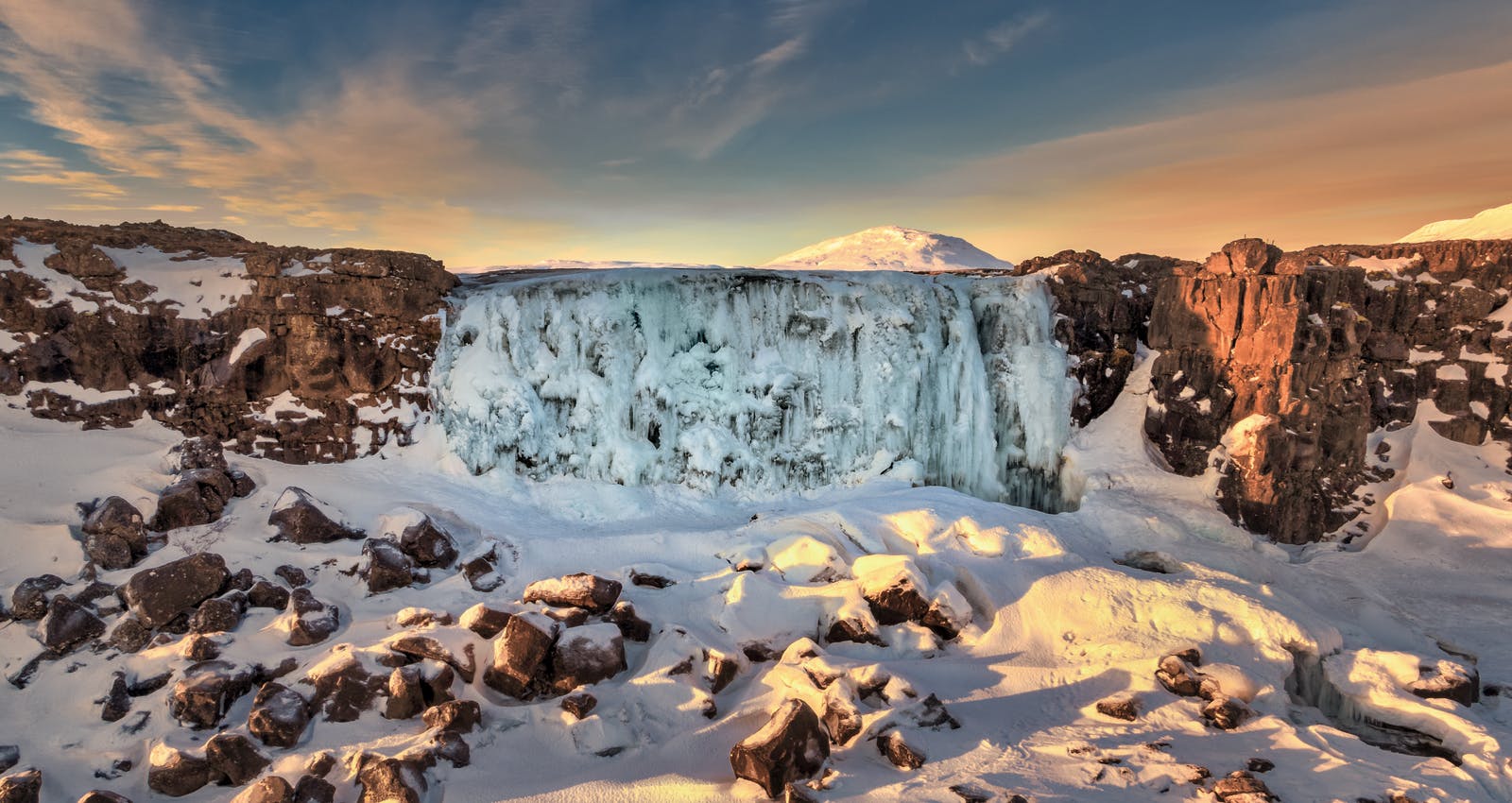
Guide to Öxarárfoss Waterfall at Þingvellir
Nestled within the breathtaking landscapes of Iceland, Öxarárfoss waterfall stands as a testament to the country's geological wonders, rich history, and the enduring power of nature. This remarkable waterfall is not just a tourist attraction; it is a site that weaves together scientific marvels and historical significance, inviting visitors to delve deeper into the tapestry of Iceland's natural and cultural heritage.
Öxarárfoss is situated in Þingvellir National Park, a UNESCO World Heritage Site known for its unique geological features. It is located about 53 kilometres (approximately 33 miles) from Reykjavík. Þingvellir is one of the most visited tourist attractions in Iceland and is a part of the famous Golden Circle.
Geological Marvels
The waterfall is a part of the Öxará River, which originates from the nearby Botnssúlur mountain. The distinctive horseshoe shape of the falls is a result of the interplay between geological processes and the relentless force of water. Öxarárfoss stands at a height of approximately 13 metres (43 feet).
The underlying geology of Öxarárfoss is closely tied to the Mid-Atlantic Ridge, a tectonic boundary that separates the North American and Eurasian tectonic plates in Iceland. This geological phenomenon contributes to the park's dramatic landscapes, including the Almannagjá Gorge, where visitors can witness the visible gap between the drifting tectonic plates.
The waterfall itself is a product of the Almannagjá rift valley, a fissure and a fault formed by the tectonic movements. As the Öxará River flows across the Þingvallahraun Lava Field, it cascades over the ancient lava formations, creating Öxarárfoss. The juxtaposition of the crystalline water against the rugged, volcanic rocks exemplifies the dynamic geological processes that have shaped Iceland over millions of years.
Hydrology and Ecosystem

Beyond its geological significance, Öxarárfoss plays a crucial role in the hydrology of the region. The waterfall serves as a key component of the Öxará River's watershed, contributing to the overall water balance of the area. The water originates from springs and underground sources, sustaining a delicate ecosystem along its course.
The surrounding vegetation, including moss-covered lava fields and hardy plant life, showcases the adaptability of flora to Iceland's challenging environmental conditions. The interplay between water, rock, and vegetation illustrates the interconnectedness of natural systems, creating a harmonious balance that has evolved over centuries.
Water in Icelandic Nature
Iceland boasts extraordinary water wealth, featuring glaciers, varied wetlands, numerous lakes, rivers, and waterfalls. The country is abundant in both groundwater and surface water, ranging from pure and refreshing to geothermally heated or chilled, including turbid glacial water and pristine spring-fed water.
The Perlan water exhibition showcases the richness of freshwater, exploring its diverse forms, inherent characteristics, societal significance, the variety of aquatic life, and its pivotal role in shaping the landscape. The exhibition is a dynamic and visually engaging experience, with a strong focus on interactive participation utilising cutting-edge multimedia technology.
Historical Tapestry

Öxarárfoss is not merely a geological wonder but also a site steeped in history and cultural significance. Its location within Þingvellir National Park is closely linked to the Alþingi, one of the world's oldest parliamentary assemblies, established in 930 AD. The assembly, held annually, served as a gathering place for the early Icelandic settlers to discuss laws, resolve disputes, and strengthen social bonds.
The Öxarárfoss waterfall was not only a scenic backdrop to these gatherings but also played a role in the legislative processes. The law speaker, positioned on the Law Rock or Lögberg, would recite laws to the assembled crowds, and the acoustics of the Öxarárfoss would amplify his voice, making it audible to a larger audience. This natural amphitheatre provided a unique setting for the dissemination of laws and the collective shaping of Iceland's legal and societal framework.
Cultural Symbolism
Öxarárfoss is a symbol of continuity and resilience in Icelandic culture. Its presence in the Þingvellir National Park is a reminder of the enduring spirit of democracy and the importance of preserving natural heritage. The waterfall has been a source of inspiration for Icelandic artists and writers, finding its place in literature and folklore that celebrate the country's unique connection to nature.
In the 19th century, during the Icelandic independence movement, Öxarárfoss became a symbol of national identity and pride. The waterfall, with its historical and geological significance, embodied the strength of the Icelandic people and their determination to maintain their cultural distinctiveness.
Öxarárfoss in Icelandic Folklore

One prevalent theme in Icelandic folklore is the belief in hidden worlds inhabited by mystical beings, such as elves and hidden folk. Öxarárfoss, with its ethereal beauty and secluded location, has become a focal point for stories about these supernatural creatures. According to local legends, the area around the waterfall is said to be a dwelling place for elves.
It is said that the elves, living in the hidden nooks and crannies of the surrounding rocks and cliffs, are guardians of the waterfall. Folktales tell of their interactions with humans, sometimes offering assistance or playing mischievous tricks. The belief in the coexistence of humans and supernatural beings is deeply rooted in Icelandic folklore, and Öxarárfoss serves as a mystical portal to this hidden realm.
Conservation and Tourism
Today, Öxarárfoss continues to draw visitors from around the world, not only for its scenic beauty but also for its scientific and historical importance. The Þingvellir National Park authorities prioritise conservation efforts to protect the fragile ecosystem surrounding the waterfall and to ensure its continued geological integrity.
Tourists visiting Öxarárfoss are encouraged to explore the marked trails that lead to viewpoints offering stunning vistas of the waterfall and the surrounding landscapes. Interpretive signs along these trails provide information about the geological processes shaping the area and the historical significance of Þingvellir.
How To Get to Öxarárfoss from Reykjavík
If you're in Reykjavík and eager to explore the mesmerising Öxarárfoss waterfall, the journey to Þingvellir National Park, where the waterfall is located, is an adventure in itself. The journey is about 53 kilometres (approximately 33 miles). Here's a comprehensive guide on how to get to Öxarárfoss from Reykjavík:
- Head northeast on Route 1 (also known as the Ring Road) from Reykjavík.
- After approximately 18 kilometres (11 miles), take a right onto Route 36, following signs for Þingvellir National Park.
- Upon reaching Þingvellir National Park, follow signs for the Öxarárfoss parking area.
- Parking is available near the entrance to the park, and from there, it's a short walk to the waterfall.
FAQ

How Long Is the Hike to Öxarárfoss Waterfall?
The hike to Öxarárfoss waterfall from the parking area in Þingvellir National Park is relatively short and accessible. On average, the hike takes approximately 15 to 20 minutes, covering a distance of around 0.6 kilometres (0.37 miles).
What Is the History Of the Öxarárfoss Waterfall?
The waterfall served as a natural amphitheatre during political gatherings in the national park of Þingvellir, with the law speaker standing on the nearby Law Rock (Lögberg) and addressing the assembly. Read more about the history of Öxarárfoss in the article above.
What Is the Loudest Waterfall in Iceland?
When it comes to the title of the loudest waterfall, Dettifoss claims the crown. Dettifoss is situated in the Vatnajökull National Park in northeastern Iceland and is renowned for its sheer power and volume.








